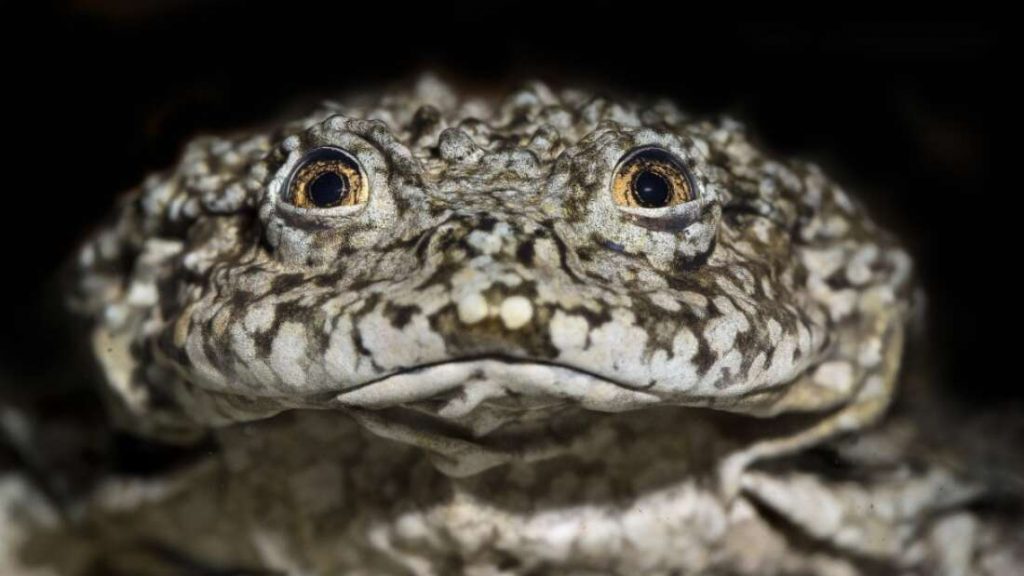
In a new report that has the words Titi, caca, and scrotum in it, we’ve just found out that Lake Titicaca’s Giant Frog, aka, the Scrotum Frog is endangered. The massive frogs, which grow up to 2 feet in their native habitats in Bolivia and Peru, are being slowly killed off due to a combination of habitat contamination and a native medicine called “Frog Juice.”
If you’re wondering how the frogs got the unique nickname of the scrotum frog, it has to do with their characteristically loose, saggy skin, which apparently gives them a similar appearance to a ball sack. While humorous to talk about, the saggy skin actually serves a purpose. Living at high altitudes, it provides more surface area through which the frog can absorb oxygen.
Things have been on a pretty steep decline for the scrotum frogs since 2016, when pollution from plastics and agricultural waste caused a mass die-off event that killed more than 10,000 frogs. When you add to that the fact that they are considered an aphrodisiac in traditional medicine, and the fact that they are a popular tourist item when turned into bags and sold in local markets, and you can imagine why they are becoming so endangered.
Thankfully, according to IFLScience, a new project is underway to study the genetic makeup of the scrotum frogs and figure out the best way to protect them from extinction. The Integrated Water Resources Management project heading up the research said this in a recent statement:
“The investigations aim to characterize the main habitats used by the Titicaca Giant Frog and diagnose the threats to these habitats to prioritize conservation areas, in the same way they seek to assess the population status through the method of transects with snorkeling, to finally establish the taxonomic identity of the species by means of genetic analysis. All the results will be used in decision making by the key actors to guarantee their future conservation.”



